
Brewing is the production of beer by steeping a starch source in water and fermenting the resulting sweet liquid with yeast. It may be done in a brewery by a commercial brewer, at home by a homebrewer, or by a variety of traditional methods such as communally by the indigenous peoples in Brazil when making cauim. Brewing has taken place since around the 6th millennium BC, and archaeological evidence suggests that emerging civilizations including ancient Egypt and Mesopotamia brewed beer. Since the nineteenth century the brewing industry has been part of most western economies.

Homebrewing is the brewing of beer, mead, and ciders on a small scale for personal, non-commercial purposes. Supplies, such as kits and fermentation tanks, can be purchased locally at specialty stores or online. Alcohol has been brewed on the domestic level since its advent, thousands of years prior to its commercial production, although its legality has varied according to local regulation. In the United States, a permit is required to distill spirits such as moonshine.
Little Creatures is an Australian brewing company based in Fremantle, Western Australia, originally established in 2000 by the original brewers of the Matilda Bay Brewing Company. The name "Little Creatures" is inspired by a song lyric from the Talking Heads Little Creatures album and refers to the live yeast cells that turn the sugars in malt wort into ethanol.
Steam beer is a highly effervescent beer made by fermenting lager yeasts at warmer ale yeast fermentation temperatures. It has two distinct but related meanings:

Adjuncts are unmalted grains or grain products used in brewing beer which supplement the main mash ingredient. This is often done with the intention of cutting costs, but sometimes also to create an additional feature, such as better foam retention, flavours or nutritional value or additives. Both solid and liquid adjuncts are commonly used.
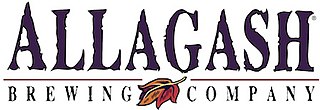
Allagash Brewing Company is a brewery in Portland, Maine.

DB Breweries is a New Zealand-based brewing company, owned by Heineken Asia Pacific. Founded in 1930 by Sir Henry Kelliher and W Joseph Coutts, the partners purchased Levers and Co. and the Waitemata Brewery Co. in Otahuhu. Asia Pacific Breweries acquired DB Breweries in 2004, which in turn was bought-out by Heineken International in 2012. The company mainly produces pale lager, whilst its Tui brand is one of the better-known beers in New Zealand, partly due to strong advertising.
Beer is the most popular alcoholic drink in New Zealand, accounting for 63% of available alcohol for sale. At around 64.7 litres per person per annum, New Zealand is ranked 27th in global beer consumption per capita. The vast majority of beer produced in New Zealand is a type of lager, either pale or amber in colour, and typically 4% – 5% alcohol by volume.
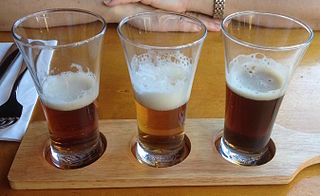
Beer style is a term used to differentiate and categorise beers by factors such as colour, flavour, strength, ingredients, production method, recipe, history, or origin.
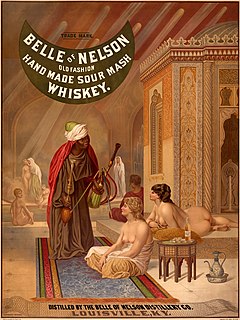
Sour mash is a process used in the distilling industry that uses material from an older batch of mash to start the fermentation of a new batch, analogous to the making of sourdough bread with a starter. The term can also be used as the name of the type of mash used in that process, and a Bourbon made using this process can be referred to as a sour mash Bourbon. Despite a common misconception, sour mash does not refer to the flavor of the Bourbon.
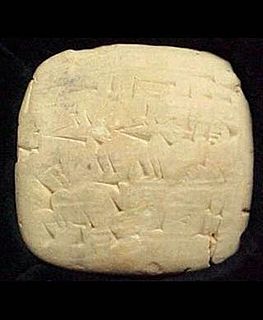
Beer is one of the oldest drinks humans have produced, dating back to at least the 5th millennium BC in Iran, and was recorded in the written history of ancient Egypt and Mesopotamia and spread throughout the world.
The following lists events that happened during 1904 in New Zealand.
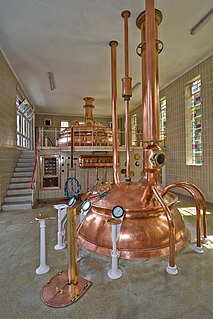
A brewery or brewing company is a business that makes and sells beer. The place at which beer is commercially made is either called a brewery or a beerhouse, where distinct sets of brewing equipment are called plant. The commercial brewing of beer has taken place since at least 2500 BC; in ancient Mesopotamia, brewers derived social sanction and divine protection from the goddess Ninkasi. Brewing was initially a cottage industry, with production taking place at home; by the ninth century monasteries and farms would produce beer on a larger scale, selling the excess; and by the eleventh and twelfth centuries larger, dedicated breweries with eight to ten workers were being built.
In brewing, attenuation is the percentage that measures the conversion of sugars into alcohol and carbon dioxide by the fermentation process; a more attenuated beer will generally be drier and more alcoholic than a less attenuated beer made from the same wort. The percentage is calculated by comparing weight or specific gravity of the extract before and after fermentation.

Alcohol has been consumed in New Zealand since the arrival of European settlers. The most popular alcoholic beverages are beer and wine. New Zealand has no minimum consumption age for alcohol, however the minimum purchase age is 18.
Beer is produced through steeping a sugar source in water and then fermenting with yeast. Brewing has taken place since around the 6th millennium BC, and archeological evidence suggests that this technique was used in ancient Egypt. Descriptions of various beer recipes can be found in Sumerian writings, some of the oldest known writing of any sort. Brewing is done in a brewery by a brewer, and the brewing industry is part of most western economies.
When drinking beer, there are many factors to be considered. Principal among them are bitterness, the variety of flavours present in the beverage, along with their intensity, alcohol content, and colour. Standards for those characteristics allow a more objective and uniform determination to be made on the overall qualities of any beer.
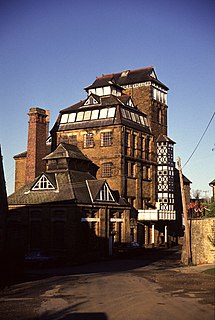
A tower brewery is a distinct form of brewery, identified by its external buildings being arranged in the form of a vertical tower.
















